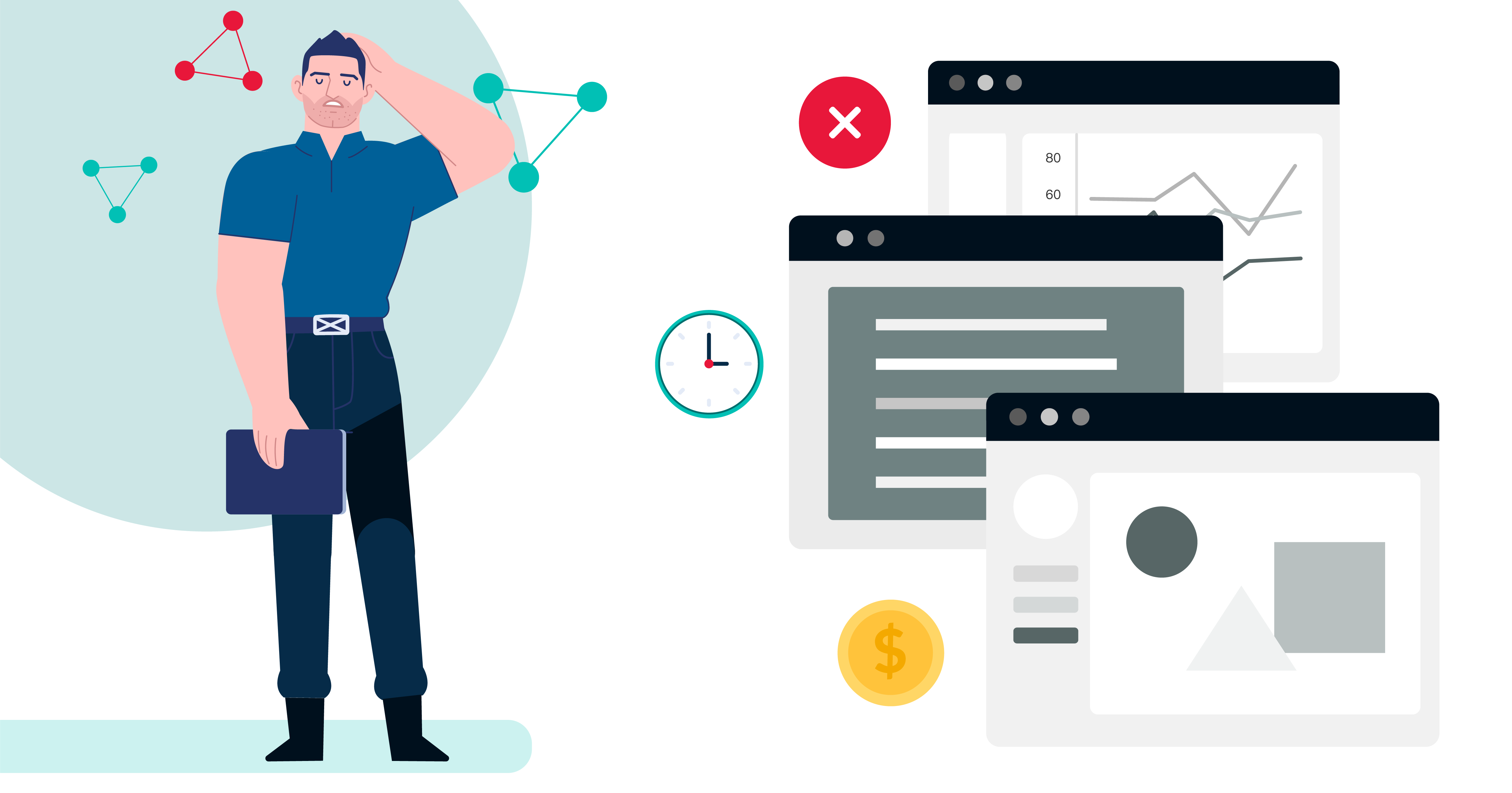It’s safe to say that many procurement professionals have been through this frustrating scenario:
Your organization has been discussing a potential digital transformation for the last five years, and each time the team aligns to begin the RFP process, an unforeseen event has occurred and the launch is either suspended or put on hold. Once the dust settles, the process begins again, and this most recent interruption has changed the requirements for specific teams involved in the process.
In fact, according to McKinsey, more than seven in ten survey respondents say the progress of digital transformation efforts has slowed or stalled at some point. As this cycle continues, a lot of mid-to-enterprise organizations are experiencing a sense of transformation burnout.
Even with a large number of companies experiencing that stall during the digital transformation process, there are several steps that can be taken to avoid burnout and ensure that your journey to using more innovative technology goes smoothly.
Define the immediate need
There are a lot of tools and softwares that can be used to address various needs within your organization—but attempting to onboard multiple tools at once can quickly lead to burnout and frustration.
Instead, ask yourself: what are the most defined challenges your team would like to address? Who is affected by these pains? By gathering data on the biggest pain points your procurement team experiences you can prioritize what needs to be addressed first and focus on one digital solution at a time.
Leverage your team
Since different people on your team have different responsibilities and day-to-day tasks to complete, everyone will likely have a unique opinion on what the best path moving forward will be. Take advantage of these varying perspectives and gauge each person’s ideal future state.
Sit down with your team, clearly communicate the expectations you and your executive team have for them, and devise a phased approach to working toward a more efficient digital transformation. Make sure your plan aligns with organizational vision and business goals.
Build your requirements based on insights
Once you have feedback from your team, determine data gaps in your plan. Where could you gather more definitive insight on the struggles you’re trying to solve so decisions are backed by evident need versus just a desire for a new digital solution? What are some expected challenges you can see this process facing?
Additionally, it’s essential to involve stakeholders in this planning process. Keep in mind that stakeholders aren’t just the executive team or finance department who will be backing the purchase of these solutions. Consider the team members who will be using the product on a daily basis and will need to be the first ones trained on its implementation. Involving everyone affected by digital transformation can help avoid friction and enable efficiency down the line.
Define a launch timeline
As you move forward in choosing a solution to implement, a realistic and detailed launch plan is essential to avoid digital transformation burnout. Ensure your plan includes your firm requirements for the solution before you begin working on an RFP, as well as an ideal and stretch launch plan for how you would like the implementation timeline to go.
Remember to be realistic in these expectations to allow for a better launch—the last thing you’ll want to do is rush the project only to have important checklist items fall through the cracks or see the project stall entirely.
Once the solution is implemented within your organization, perform a retrospective on how your process went. What went right, what went wrong, and what could be improved for the next step toward digital transformation? Measure specific KPIs that can be used to have an even more data-backed process for your next digital solution onboarding.
Start with light lift projects
It can be easy to get wrapped up in the capabilities of new procurement technology, but don’t dive in too quickly before you can get a handle on how the solution works. Begin with small projects that are keenly focused on business initiatives. Determine point solutions that will deliver value, solve an immediate need, and expose overlooked pain points across your organization.
Consider starting out with:
- Contract management
- Data/analytic tools
- Supplier marketplaces
- Payment tools
By focusing on the core components for a successful transformation first, you can see faster value, return on investment, and adoption. It’s important to note that every strong procurement decision, from what digital solutions you implement to how you find suppliers, should be based on strong data. Too often, data is seen as an after-thought, something to address once solutions are implemented, when, in reality, data should be at the forefront of any digital transformation and be considered first. Without good supplier data, you may not even be able to spot gaps in your procurement process that could be addressed through digitization efforts. A supplier data foundation is an integral part of the digital transformation process and necessary to efficiently and effectively meet business needs.
Solve Supplier Data Problems with TealBook
Using multiple platforms and supplier portals to manage your supplier data can be cumbersome and exhausting as your procurement team moves between solutions. Moreover, traditional forms of data management often result in stale data that does not enable agile decision-making.
TealBook leverages state-of-the-art machine learning concepts to deliver supplier data light years ahead of self-reported, manually-collected and maintained data feeds all in one cloud-based supplier intelligence application.
Contact our team today to learn how you can unleash procurement possibilities with robust, dynamic supplier data that can power your e-procurement stack.

